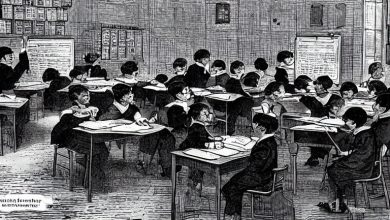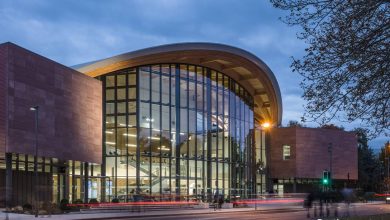UK Education: A Tapestry of Change

Inception: The Roots of British Learning In a landscape ever-evolving, the UK’s education story is a rich tapestry, interwoven with societal shifts and policy winds. Let’s embark on a journey from the genesis of grammar schools to the broader horizons of comprehensive education.
Historical Mosaic Tracing its lineage back through a myriad of developments, the UK’s education system is a historical mosaic. From the inception of grammar schools, through the church’s didactic influence, to the birth of public schools, each piece is a critical part of the puzzle.
Reforms: The Turning Tides Educational reforms – they’re the rudders steering the UK’s academic ship. Post-war shifts, contemporary tweaks in governance, curriculum transformations – each played its part in sculpting today’s educational ethos.
1. Education’s Dawn In its nascent stages, UK education was a realm of exclusivity and class. Let’s delve into grammar schools, the church’s educational stronghold, and the elite nurturing grounds of public schools.
Grammar Schools: An Elite Beginning Rooted in medieval times, grammar schools were the bastions of Latin and classics, nurturing a select few for academia and leadership. This era crystallized a class-centric educational landscape.
The Church: An Academic Shepherd Long before grammar schools, monastic and cathedral schools were the cradles of learning. Here, the church not only imparted religious wisdom but also laid the early stones of literacy.
Public Schools: Classrooms of the Aristocracy In the 19th century dawned the era of public schools – exclusive havens for the upper echelons, combining classical education with character molding, further entrenching educational class divides.
2. The Grammar School Epoch Post-WWII, grammar schools burgeoned, aiming to democratize education. Central to this era was the 11+ examination, a beacon of hope and a point of contention.
Expanding Horizons In the war’s aftermath, a wave of reforms crashed over the UK, reshaping the educational landscape, aiming to fling open the doors of higher learning to more than just a privileged few.
The 11+ Examination: A Double-Edged Sword This test, a fulcrum at age 11, determined academic destinies. It was a ladder for some, a barrier for others, igniting debates over its fairness and the true nature of social mobility.
3. The Comprehensive Movement In the swirling debates over equality and education, comprehensive education emerged as a new dawn. Let’s explore the rationale, the dissolution of the 11+ exam, and the blossoming of diverse curricula.
Equality’s New Chapter Comprehensive education was born from the desire for inclusivity, a rebellion against early selection, a dream of an education system blind to academic prowess.
The 11+ Exam Bows Out Its abolition marked a seismic shift, paving the way for a more nuanced assessment and a richer tapestry of student demographics.
Curricular Diversity This era championed an expansive curriculum, catering to a spectrum of interests and aptitudes, striving for a well-rounded education for every learner.
4. Challenges and Reflections Yet, comprehensive education wasn’t without its critics. Issues of academic standards and lingering social inequalities sparked fervent discussions and initiatives aimed at bridging these divides.
5. Today’s Educational Landscape Fast forward, and the UK’s educational narrative continues to evolve. Academies, free schools, and the digital revolution in learning are the latest chapters, each with their promise and challenges.
Academies and Free Schools: A New Governance With greater autonomy, these institutions are reshaping the educational fabric, offering specialized learning experiences, and adding a new dimension to educational diversity.
Technology: The New Frontier The digital leap in education has transformed traditional learning paradigms, though it’s not without its hurdles – the digital divide and screen time debates are testament to that.
Conclusion: Charting Future Courses The UK’s educational journey is a reflection of its times, shaped by a blend of historical influences, social dynamics, and pedagogical innovations. From the elitist confines of early grammar schools to the inclusive embrace of comprehensive education, and the modern technological infusion, each phase has been a stepping stone to today’s educational landscape.
As we look ahead, the path is one of balance – embracing technological advancements while nurturing the diverse needs of students and continuously striving to iron out social inequalities. The future beckons a UK education system that is adaptive, inclusive, and ever-evolving, ready to prepare students for an increasingly complex world.



